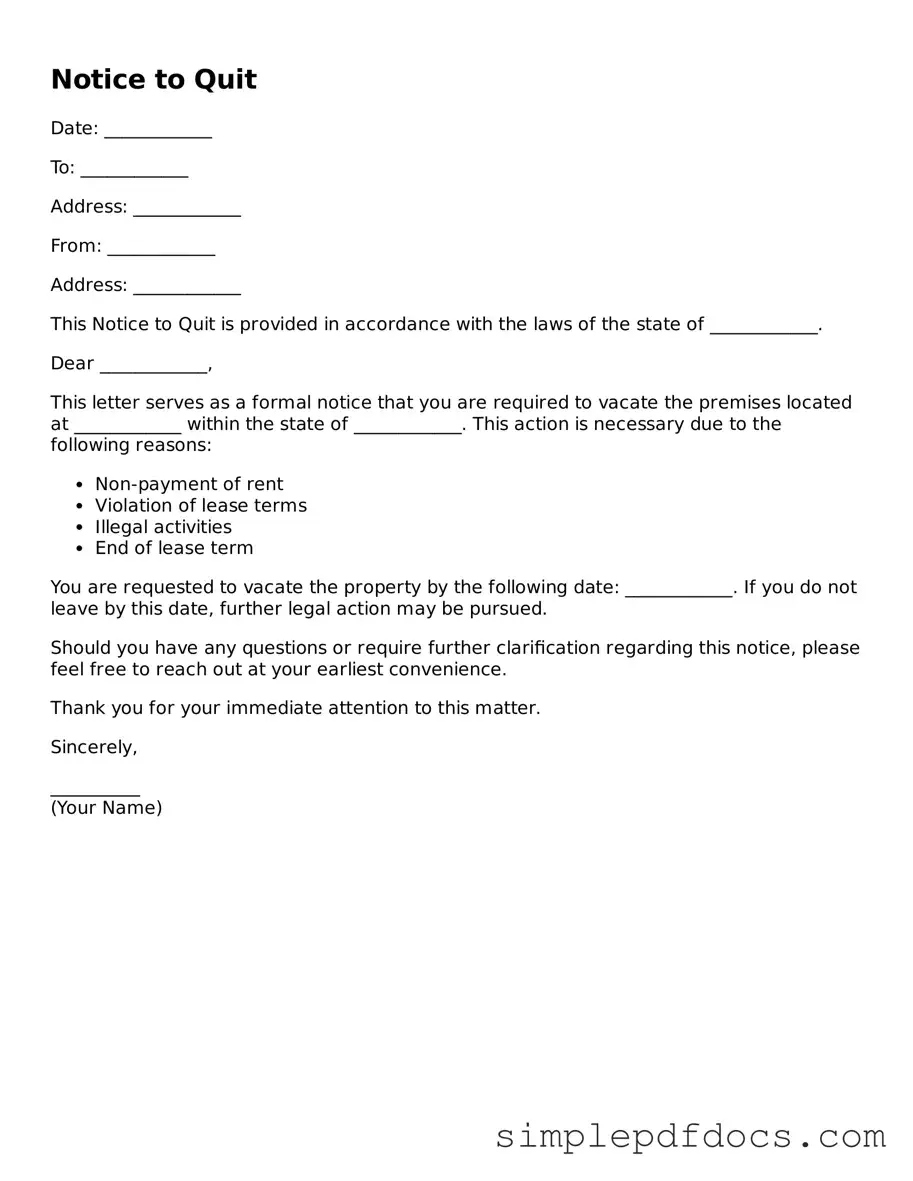Attorney-Approved Notice to Quit Form
The Notice to Quit form is a legal document used by landlords to inform tenants that they must vacate the rental property. This notice typically outlines the reasons for eviction and provides a specific timeframe for the tenant to leave. Understanding this form is essential for both landlords and tenants to ensure compliance with local laws and to protect their rights.
Get Document Here
